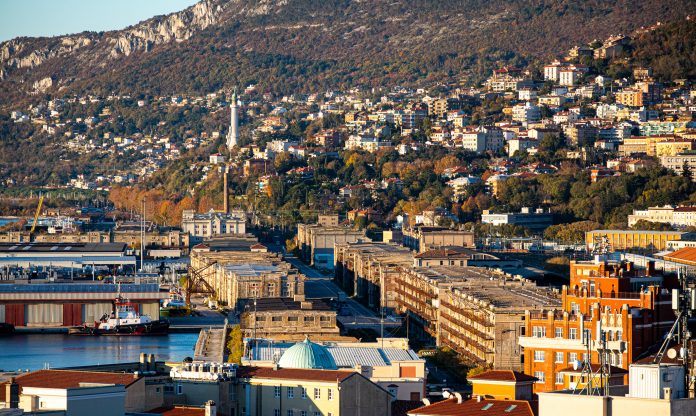by InTrieste
The Port of Trieste is undergoing a comprehensive redevelopment aimed at modernizing the city’s transportation infrastructure and enhancing connectivity between the waterfront and the historic city center. The project, supported by Italy’s National Recovery and Resilience Plan (NRRP), is expected to be completed by 2026 and will introduce a range of new transportation solutions, including pedestrian-friendly walkways, cycling paths, and a cable car system connecting the city to the surrounding Karst plateau.
A centerpiece of the plan is the creation of a new one-way monumental avenue designed to alleviate traffic congestion. Funded with €19 million, this avenue will provide dedicated lanes for both vehicles and public transport, while significant portions of the roadway will be reserved for pedestrians and cyclists. Public spaces will be enhanced with greenery, lighting, and repurposed historic paving stones, emphasizing both functionality and heritage preservation.
Accessibility is a core focus of the project, with the removal of architectural barriers to ensure that the new infrastructure is usable by all, including those with reduced mobility. Sidewalks will be designed to be level with the street, except at designated bus stop areas. The avenue will also feature dedicated bike lanes, with additional cycling paths running through a planned linear park that will stretch from Molo IV to Bovedo station.
The revitalization of Porto Vecchio will also see enhancements to the city’s public transportation system. Bus lines will be realigned to serve the port more effectively, with plans to integrate new routes and improve connections with other parts of the city. A trial of bus line 20, which connects Muggia to Barcola via the Old Port, is set to conclude soon, while line 6 will resume service to the convention center. The popular Miramar sea line will continue operations through September, offering additional transport options along the waterfront.
As these changes take shape, Trieste’s Porto Vecchio will become a model of sustainable urban development, combining modern transportation with historical preservation. The project is expected to significantly improve mobility for residents and visitors, making the port a vital gateway between the city and its coastal surroundings.





























